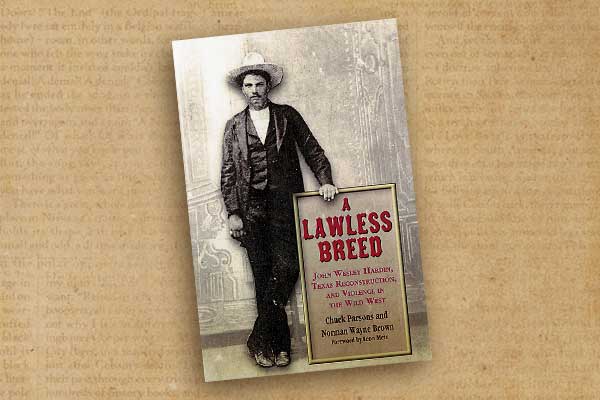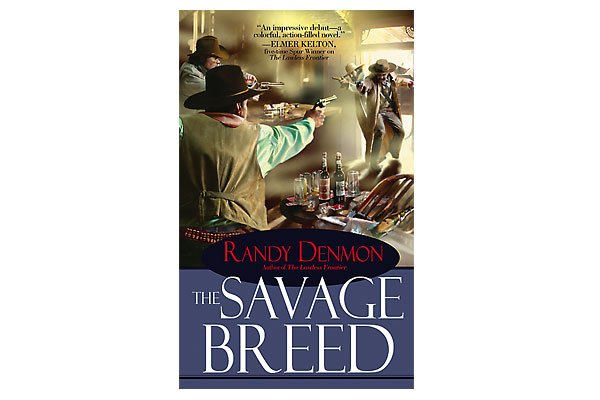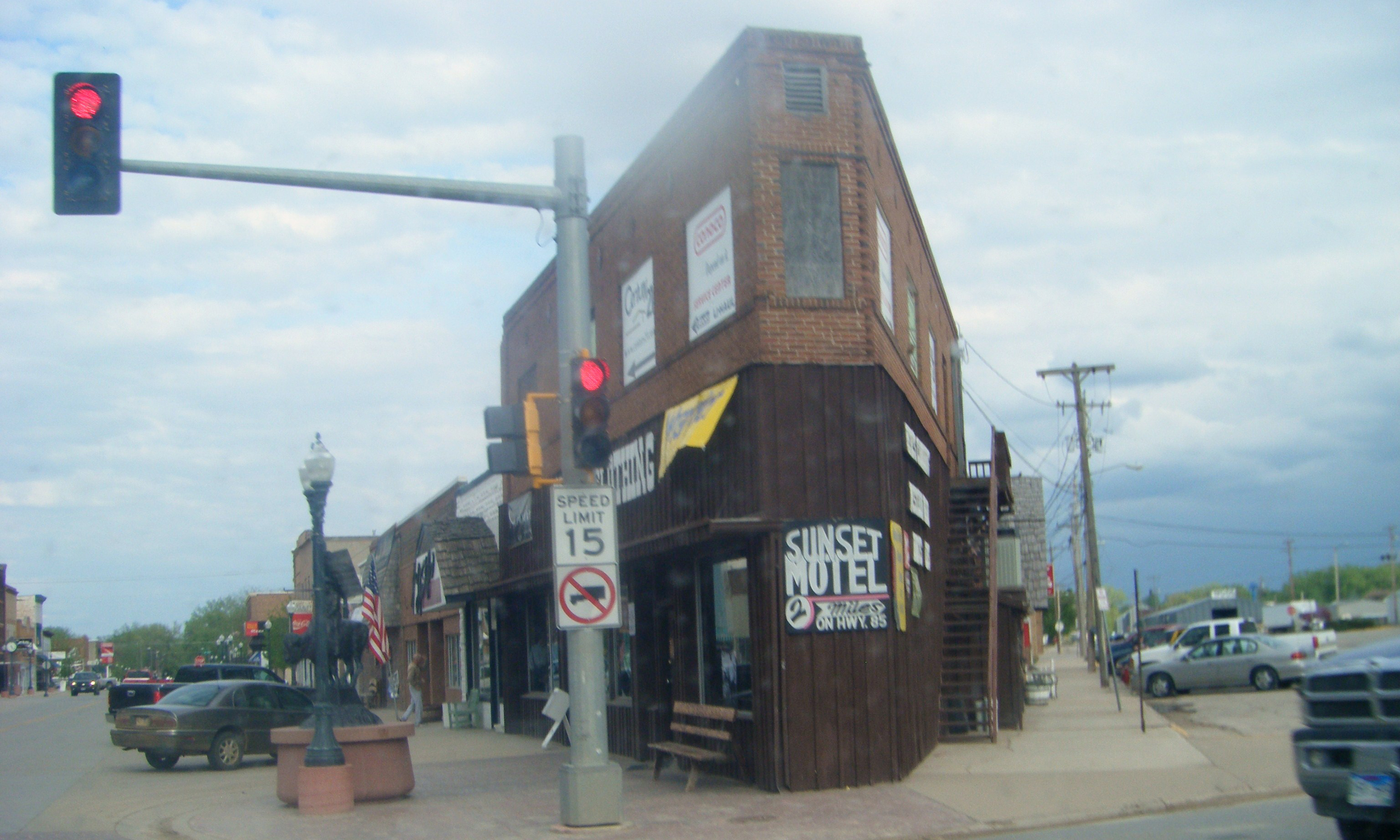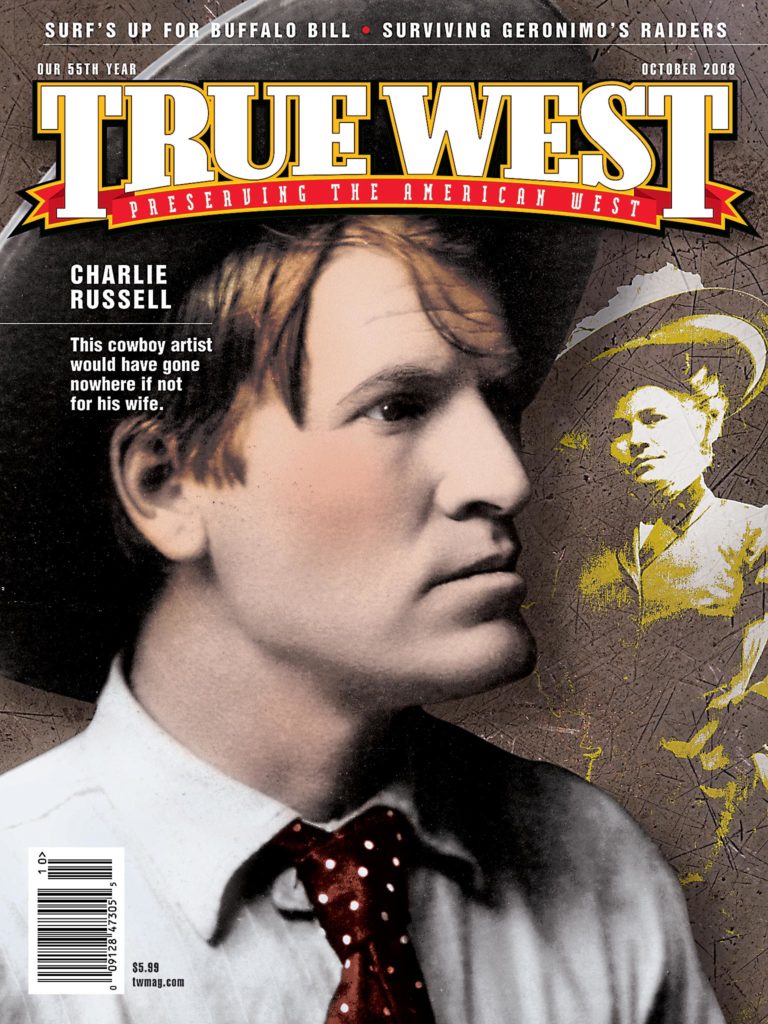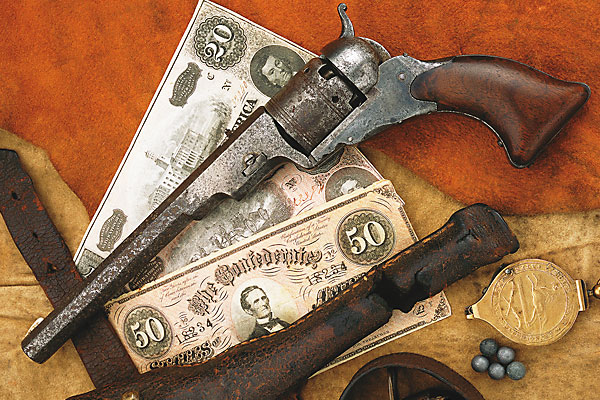
The day before the fall of the Alamo, in which Santa Anna and his soldiers crushed the rebellion in Texas, Samuel Colt formed the Patent Arms Mfg. Co. in Paterson, New Jersey, on March 5, 1836.
In fact, the same day Santa Anna’s forces launched their attack on the Alamo, on February 25, 1836, was also the day Colt’s American patent was granted.
Just like this historic battle helped rally support for establishing Texas as a republic, the revolving pistol Colt patented would also prove fruitful in helping Texas win its independence and statehood. Colonel Sam Colt’s first revolver—the handgun that would pave the way for future six-guns—was actually a five-shooter. That’s right, the five-shot revolver that had so much influence on the shape of things to come not only changed the design of six-shooters for all time but also played an important part in the settling of America’s vast frontiers.
Gone to Texas
Armed with Paterson Colts, bowie knives and a short rifle, famed frontiersman Col. John Coffee “Jack” Hays and a patrol of 14 mounted Texas Rangers found themselves attacked by a band of 80 Comanche warriors. They were 80 miles from San Antonio, near the Pedernales River. Although greatly outnumbered, the Rangers countercharged the Indians with their nine-inch barreled holster pistols blazing away. During the ensuing running battle, the Rangers left close to half of the hostiles on the field dead or dying.
This 1844 battle ranks as a milestone in Indian fighting in the West for up until that time, only single-shot, muzzle-loading arms—suitable for fighting on the ground, such as in the Eastern woodlands—had been available. Such guns were slow to load, and the Indians had adopted tactics of rushing their opponents between shots while the Texans were busy trying to reload. Although the Rangers had adopted the practice of firing in platoons, so that a few men would always be ready with loaded weapons in the event of a rush, the Paterson’s five-shot capabilities allowed for a couple of men to keep revolvers full and ready in order to keep the enemy at bay while those who had expended their ammunition reloaded their guns. Furthermore, these lightweight, repeating pistols now made it possible for the Texans to completely change their tactics and fight from horseback, turning them into a guerrilla-type strike force, much like the Indians themselves—something they had not been able to do with their cumbersome single-shot weapons. This is exactly what happened to the unfortunate Indians during the Pedernales River engagement. The Texans later stated that had it not been for their Paterson repeaters they would undoubtedly not have survived this fight. After the celebrated use of these nine-inch barreled “five-shooters” by the Texas Rangers, the No. 5 holster model earned the sobriquet of “Texas Paterson.”
The reputation gained by Colt revolvers during this fast and furious skirmish helped establish Sam Colt as a man who could produce a reliable and deadly repeating pistol—something that was much needed on the frontier. Many years after this battle, an old Comanche who had been involved in “Hays’ Big Fight,” as the incident was often called, commented when shown a Paterson Colt, “Him no good.” Reportedly, this old warrior still carried a ball in his shoulder as a reminder of that bloody day.
Shooting for the Stars
From 1837 through 1842, Colt’s fledgling firm turned out a variety of his revolutionary five-shooters in varying sizes and calibers. Small pocket pistols were made with barrel lengths of 2½ to 4¾ inches, generally in .28, .31 or .34 caliber, while the mid-sized belt models featured .31 or .34 caliber bores with barrel lengths ranging between four and six inches. The larger holster pistols were all .36 bore with a wide variety of barrel lengths from a short four inches to the long nine- or 12-inch tubes. The majority of these, however, sported 7½- or nine-inch barrels. Patersons were made with and without the under-barrel rammers (loading levers) simultaneously. Curiously, the Paterson was made without a trigger guard. The revolver’s trigger is contained inside the frame and springs down for use when the hammer is cocked. After firing, it must be returned to the frame manually.
At the time, new Paterson revolvers cost from $40 to $50 cased with accessories, while the “pepperbox” revolving pistols, which were considered the closest type of competitive multi-shot handguns, sold for about one-quarter that price. Pepperbox pistols (so-named because they resembled a pepper canister of the era) were multi-barreled, double-action handguns (smoothbores), designed for fast shooting at close range, unlike the Colt, which was a bit slower to discharge, but because of its rifled barrel, more accurate.
Even though pepperboxes outsold Colt’s revolvers by a considerable margin, the success of Colt’s invention in the hands of notable frontiersmen of the day broke ground for improved models, such as the 1847 Walker, Colt Dragoons, 1849 Pocket and the 1851 Navy. The legend of the great equalizers of the West—the Colt six-shooters—was formed.
Ironically, as important as these handguns are in firearms history, only about 2,850 Paterson Colts of these three basic types were produced, thus making them a rarity in the arms collecting field today. At the same time, the Patent Arms company produced around 1,650 revolving rifles and carbines, and approximately 225 multi-chambered shotguns of the same design.
Despite having a revolutionary and quality product, Colt’s company was plagued with financial problems—largely due to lackluster sales. These problems were compounded by disagreements in management, resulting in Colt leaving and the breakup of the Patent Arms Manufacturing Company.
Shrewdly, Colt retained his patents, which, as history has shown, proved to serve him well within just a few years. John Ehlers, one of the company’s early investors, who eventually became the firm’s secretary and general manager, purchased the company’s inventory and continued assembling and retailing Colt revolvers until around 1847, selling them at the reduced price of around $25 each.
Making its Mark
Although the short-lived Patent Arms company produced more guns than it could sell, the revolvers were well received in untamed regions of the world, especially in the American West, where a reliable sidearm could decide a man’s fate. As history has shown us, the Colt Paterson five-shot, caplock revolving pistols did blaze new trails, opening the way for the modern handgun.
In spite of some setbacks, such as the Paterson rifle’s poor performance in the humid swamps of Florida, where the 2nd U.S. Dragoons used a number of them during the long-running Seminole War, many reports also point out the decided advantages of the Paterson on the early frontier. For example, in late 1841, Kit Carson and a couple of dozen trappers—several armed with Colt’s five-shooters—rode to the relief of a caravan on the Santa Fe Trail. One of the rescuers, 18-year-old Oliver Wiggins, reported that their use of Colt’s revolvers caused the surprised Indians to give up the fight quickly, fleeing in a panic.
In other areas of the West too, Colt’s Paterson pistol made its mark well. In 1846, Edwin Bryant, a California-bound traveler, demonstrated his Paterson’s five-shot capabilities to a small band of Sioux Indians near Fort Laramie, Wyoming. Bryant’s comment on the Indians’ reactions was, “The rapid repeating discharges of Colt’s revolving-pistol astonished them very much. They regarded it with so much awe as to be unwilling to handle it.”
Scientists Up in Arms
Colonel Colt’s invention stirred interest in the scientific and firearms world, as well as in the industrial community, since he was an early advocate of mass production, using interchangeable parts, wherever possible, in the manufacturing of his arms. Colt employed assembly line techniques nearly three quarters of a century before Henry Ford, who is often erroneously credited with being the first to use mass production and interchangeable parts in manufacturing his automobiles.
In what is possibly the first publication to report on Col. Colt’s revolvers, Spirit of the Times, a “metropolitan gazette of the sporting, literary and fashionable world,” shared editor William T. Porter’s praise of the young inventor and his firearms in the July 7, 1838, edition. A copy of this rare periodical was supplied to this writer through the courtesy of prominent southern California Colt collector Robert J. Bloeth. Porter wrote, “Very few mechanical improvements within the last few years have excited a greater degree of interest than the patent fire-arms of Mr. Colt, and still fewer are there, likely to be productive of results so important.”
Whether these were the genuine feelings of the editor at the time, or simply an early paid promotional report is a matter of speculation since the office of the Spirit of the Times is listed at 157 Broadway in New York, while Sam Colt maintained an office at 155 Broadway, in that same city. (The article states that Colt’s office was directly beneath that of the gazette.)
Flawed but Formidable
Because the Paterson revolver represented an entirely new concept in firearms design and manufacture, the pistol was not without its drawbacks. As with any arm of that period, the revolver was slow to reload (by modern standards), making cased accessories a necessity. Nevertheless, when compared to a single-shot firearm, an individual’s firepower was greatly enhanced thanks to the initial five shots of the Paterson and the savvy frontiersman’s habit of carrying an extra cylinder (or more than a single revolver).
The gun’s folding trigger and lack of a trigger guard, coupled with the three-piece frame assembly, all contributed to flaws in the revolver’s overall design. One such instance of the gun’s inherent weakness occurred when a 19th-century Westerner saw his borrowed Paterson’s barrel drop off during a buffalo chase. Although the dismayed horseman quickly found the separated part and brought the revolver back to working condition, the story illustrates how merely losing the barrel wedge could turn the revolver into a useless hunk of metal—even if for just a short period of time.
In spite of such faults, combined with the Paterson’s delicate innards and comparatively weak loading of about 15 grains of FFFg (3F) blackpowder, the Paterson remained popular with those frontiersmen who had been able to obtain one. Looking back, we must remember that a mortal wound was not as important as incapacitating an enemy, which generally put him out of a fight. Besides, given the primitive state of medicine (not much further advanced than from the time of ancient Rome) and the absence of antiseptics and other life saving supplies on the frontier, a minor wound could quickly prove fatal or disabling.
Col. Colt Presents
During the Paterson factory’s brief production period, Col. Colt made a number of ornate presentation pieces. Some of the specially decorated and embellished Patersons were used to promote sales in the right markets. This practice continued for many years and has thus produced some of the finest examples of the gun maker’s art from that or any other period of history.
Elaborately engraved gold- or silver-inlaid revolvers were fitted with stocks of mother of pearl, ivory or deluxe wood, and they were housed in the finest velvet-lined wooden cases, along with a host of exquisite accessories. Today, such pieces command premium prices—well into the five- and six-figure ranges—and they are considered objects d’art.
Whether cased and elaborately embellished or a plain Jane working gun, original Patersons today command prices far beyond the reach of all but the most ardent and well-to-do collectors. For most of us, firing one of today’s replicas will have to suffice for a hands-on shooting experience with a Paterson model revolver. The modern-day copies are available in both the rammerless models and those with the loading levers incorporated. Such affordable working examples can offer shooting fun along with a better understanding of this revolver, one of the most important milestones in the evolution of firearms.
Perhaps Spirit of the Times editor William Porter summed up the Colt Paterson’s role in history best when in 1838, he prophesied that this then-new invention of Col. Colt was likely to be “productive of results so important.”


